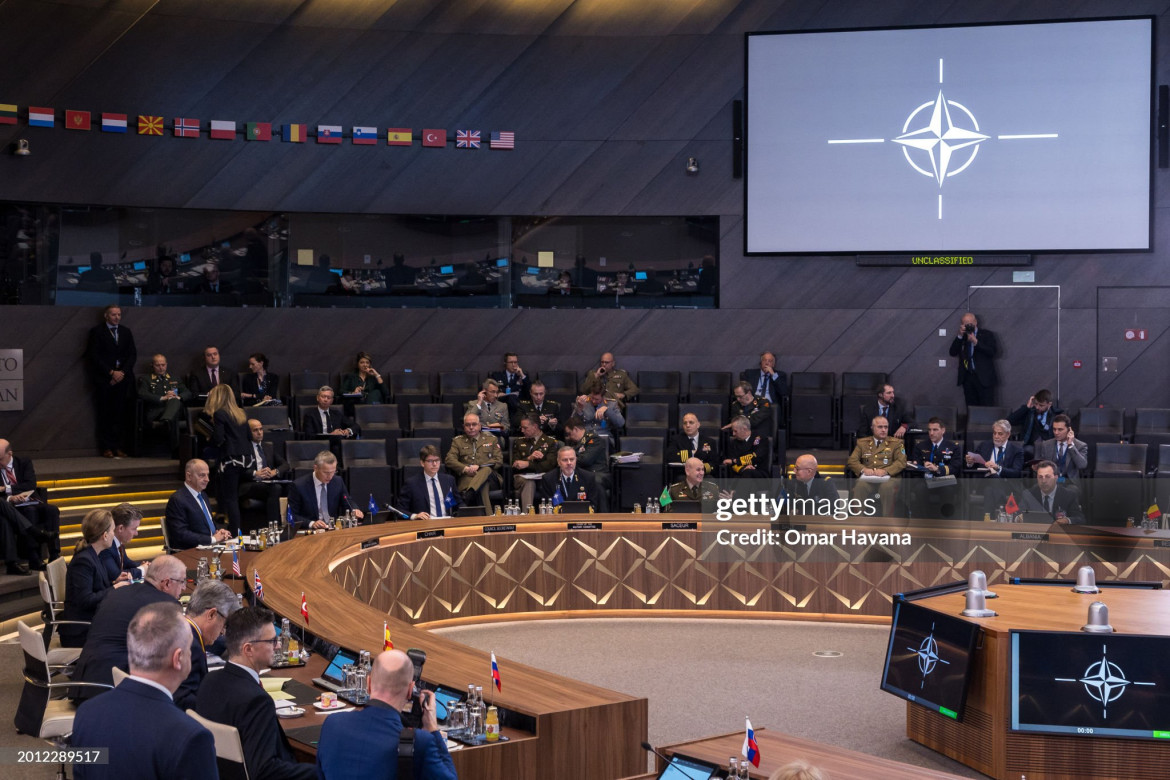Analysis
Peace is nowhere in sight: Europe and NATO race toward rearmament
European leaders met in Brussels and Paris to formalize wartime strategy. France’s military industry is in ‘war economy’ mode. The EU and NATO are preparing for a possible Trump victory and the possibility of being left to defend Ukraine alone.

The world is on a forced march towards rearmament. Europe is in full stride, fearing Russian threats as Putin is putting NATO’s stability to the test. In recent weeks, there have been growing warnings from leaders of European countries, from Denmark to Germany and the Baltics, speaking of great risks of war in the coming years, while concern grows over Russia, now in a full-on “war economy.”
European countries are signing new bilateral security agreements with Ukraine to try to cope with U.S. wavering at a time when Kyiv is struggling. There are clarifications on the commitments to deliver arms, ammunition, missiles and now aircraft, with around 60 F16s pledged to Zelensky by the Europeans. Several specialized “coalitions” are being formed (on drones, artillery, etc.) with leader countries to coordinate military aid. These include EU members but also the UK, which on military matters is practically with one foot back in the Union.
There is the promise of increased military spending by European NATO countries, in response to the risk of U.S. disengagement after Donald Trump’s statements against members who “don’t pay” – widely condemned as “irresponsible” – and the blockade in Congress on the $66 billion in aid to Ukraine. There is talk of opening a NATO-Ukraine training center in Poland. Going forward, the possibility of having a Defense Commissioner in the next European Commission is being discussed; the current chair, Ursula von der Leyen (who is considering running again), has agreed to this initiative being pushed by the EPP. For the EU, the possibility of strategic autonomy – still not clearly defined – is no longer being ruled out even by those countries most closely tied to the U.S. nuclear umbrella.
The “European facility for peace” (a new extra-budgetary instrument in service to European defense policy) is now activated in favor of Ukraine, although there are still obstacles at the Council on this front and there are delays on the one million munitions promised for this year. In January, the EU approved €50 billion in economic aid over four years (while the World Bank estimates that Ukraine will need €450 billion for reconstruction).
On Thursday, NATO defense ministers met in Brussels. Ukraine, which is on the waiting list to become a member, was also invited. On Friday, President Volodymyr Zelensky was scheduled to be in Berlin and then in Paris, to sign a bilateral security agreement with France. This is the formalization of a commitment the G7 made at the NATO summit in Vilnius in 2023 to support Kyiv. It was joined by other countries, 25 in all, according to which each country needs to establish at the national level the extent of military support, its duration, and other forms of assistance, such as financial, economic or technological. Over the weekend, the Munich Security Conference, at its 60-year anniversary, will discuss the two major ongoing wars, in Ukraine and Gaza.
After the UK’s bilateral agreement with Kyiv on January 12, Friday was set to bring clearer terms from Germany and, most importantly, the signing of a bilateral security agreement in Paris. London has earmarked another £2.5 billion for military aid to Ukraine in 2024 (after £2.3 billion in both 2022 and 2023), while Berlin is promising €8 billion this year alone (it has just opened a new munitions factory in Lower Saxony). France has not given out details of its support, but after criticism from the IFW institute in Kiel about Paris’s low contribution, it was set to give out more information on Friday about military equipment, an expected extra 40 SCALP missiles, more Caesar mobile artillery, Crotal air defense systems, missile launchers and anti-tank missiles. France, which has already put its military industry in “war economy” mode, is set to take the lead in the “artillery coalition” (increasing the production of 255 howitzers and Caesars), plus air defense, especially for pilot training.
On Thursday, NATO promised Ukraine one million drones; a group of “allies” is being set up, with the leadership of Britain and Latvia (also including soon-to-be-member Sweden, as well as Denmark, Germany, Lithuania, Estonia and the Netherlands). Denmark has pledged to deliver 19 F16s to Kyiv in the second quarter of this year; the Netherlands is expected to give 42, but has not set a deadline yet.
In response to Trump’s statements, NATO secretary Jens Stoltenberg pointed out on Thursday that out of 31 NATO countries, 18 have now met the commitment to allocate at least 2 percent of GDP to military spending. Germany is joining this club this year; France will do so in 2025. In 2022, only 7 countries had reached this commitment.
Today, Poland is the country that spends the most on the military (3.9%) and has the largest army in the EU. The Baltic states, Hungary, the Czech Republic, Romania, Greece and Finland are at between 2 and 3 percent, Italy is at 1.46 percent, and Spain is below 1 percent. Germany is in line with NATO commitments, as it has increased military spending for the first time since 1992 (which was at 3% during the Cold War).
Despite this surge in spending, Europe fears it will not be able to defend Ukraine if the U.S. contribution dries up.
Originally published at https://ilmanifesto.it/la-pace-non-si-vede-corsa-al-riarmo-di-europa-e-nato on 2024-02-16
